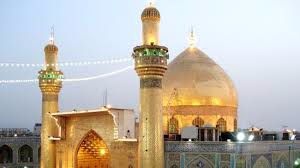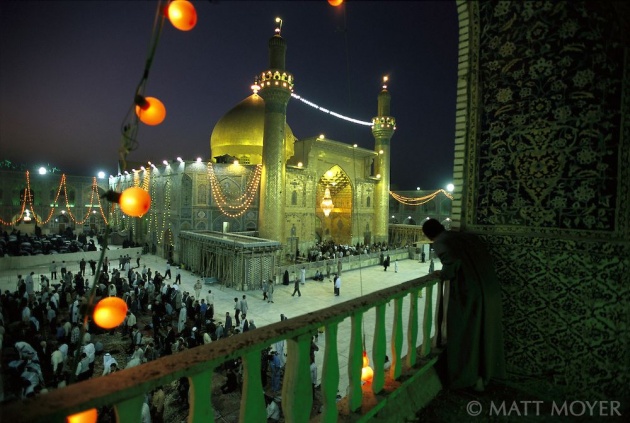Najaf (Arabic: النجف; BGN: An Najaf) is a city in Iraq about 160 km (roughly 100 miles) south ofBaghdad. Its estimated population in 2008 is 560,000 people. It is the capital of Najaf Governorate. It is widely considered the third holiest city of Shi'a Islam and the center of Shia political power in Iraq. The city is home to the Imam Ali Shrine, and hosts millions of pilgrims yearly.
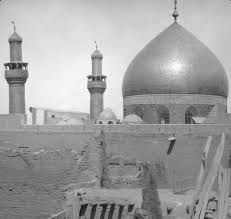
Najaf is considered sacred by both Shi'a and Sunni Muslims. Najaf is renowned as the site of the tomb of Alī ibn Abī Tālib also known as "Imām Alī"the First Imam of the Shiites, the cousin and son-in-law of the Islamic prophet, Muhammad whom the Shi'a consider to be the righteous caliph. Sunnis consider Ali the fourth Rashidun (rightly guided Caliphs). The city is now a great center of pilgrimage from throughout the Shi'a Islamic world. It is estimated that only Mecca andMedina receive more Muslim pilgrims. As the burial site of Shi'a Islam's second most important figure,the Imam Ali Mosque is considered byShiites as the third holiest Islamic site.
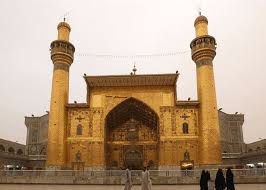
The Imam Ali Mosque is housed in a grand structure with a gold gilded dome and many precious objects in the walls. Nearby is the Wadi-us-Salaam cemetery, which is the largest cemetery in the world.[11] It contains the tombs of several prophets and many of the devout from around the world aspire to be buried there, to be raised from the dead with Imām Alī on Judgement Day. Over the centuries, numerous hospices, schools, libraries and Sufi convents were built around the shrine to make the city the center of Shīʻa learning and theology.
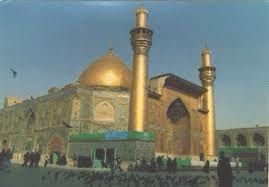
The Najaf seminary is one of the most important teaching centres in the Islamic world. Ayatollah Khomeini lectured there from 1964 to 1978.Many of the leading figures of the new Islamic movement that emerged in Iraq, Iran and Lebanon in the 1970s had studied at Najaf.
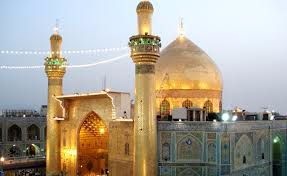
The Najaf area is located 30 km south of the ancient city of Babylon and 400 km north of the ancient Biblical city of Ur. The city itself was reputedly founded in 791 by the Abbasid Caliph Harūn ar-Rashīd, as a shrine to Ali ibn Abi Talib.

History shows us that Najaf is indeed an ancient city that has its beginning stretching far before the birth of Islam. Archaeological discoveries show the existence of a populace dating back to the times of Christ Jesus. Najaf possesses one of the largest burial grounds in the vicinity for Christians. The centuries following have proven this to be an also a city that possessed a multicultural and religious people. Below is a qoute taken from the Iraq Center for Investigative Journalism,
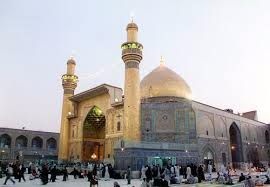
"Mohammed al-Mayali Director of Inspectorate Effects of the province of Najaf said , "The excavations which we have had for years and we still, on the graves confirm that the Najaf contains the largest Christian cemetery in Iraq, cemetery area of 1416 acres called (or Khashm), and the cemetery has a large extension of the province of Najaf " Mayali adds, "We have found indications found on the graves of Christianity represented by sign of the cross, as we found on a piece of stone written on them (Abdul Christ), a known pre-Christian character of Islam, in the city of confusion and found the relics At Alvrchih dating back to the Sassanid period and the period of pre-Islam Mayali assured that "The graves discovered in the site or Khashm are five types: first, the graves covered with a tractor pottery as the number differs from the tomb to another and the lowest number is 6 jars (where six dead), The second type is covered by the type of stone, and the third type of graves covered with And about the archaeological finds said Mayali "was discovered glass bottles used to store perfume and different kinds in terms of manufacture, wherein rare species and some cups, as it is known puzzling glass industry in that period, is unique to this industry, and different archaeological finds in the graves of the dead to another, according to Antiquities discovered in the tomb indicate that the deceased is a man or woman, through the ornaments and types, and most of the discoveries are glass bottles, necklaces of beads of agate and pottery jars small and big, and seals the fee animal, and pots by the writings of old. And that most of the pots by the sign of the cross, and this evidence of their conversion to Christianity and some of the discoveries by the Jewish writings, even after the Islamic period, there remained areas of Christian and Jewish areas, and this indicates the religious coexistence, which leads us to the attention of archaeologists Western site Mayali disclosed that "The graves discovered in the Sea of Najaf and Manathira similar and are the shops or appointed as Asmahunha Shaya _ _ Sea of Najaf in a low area and the oldest dating back to the Sassanid period, i.e., to nearly 2000 years."
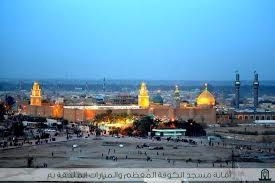
In the religion of Islam, their view is of the city starting around a man named Ali who instructed that his burial place should remain a secret as he had many enemies and he feared that his body might be subjected to some indignity. According to legend the dead body of Ali was placed on a camel which was driven from Kufa. The camel stopped a few miles west of the city and here the body was secretly buried.No tomb was raised and nobody knew of the burial place except for a few trusted people.
It is narrated that more than a hundred years later the Abbasid Caliph, Harun al-Rashid, went deer hunting outside Kufa and the deer sought sanctuary at a place where the hounds would not pursue it. On inquiry as to why the place was a sanctuary Harūn ar-Rashīd was told that it was the burial place of Ali. Harūn ar-Rashīd ordered a mausoleum to be built on the spot and in due course the town of Najaf grew around the mausoleum.
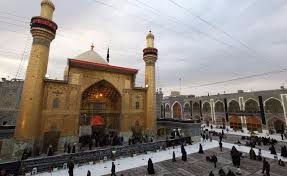
Under the rule of the Ottoman Empire Najaf experienced severe difficulties as the result of repeated raids by Arab desert tribes and the Persian army and acute water shortages caused by the lack of a reliable water supply. The number of inhabited houses in the city had plummeted from 3,000 to just 30 by the start of the 16th century.
When the Portuguese traveller Pedro Texeira passed through Najaf in 1604, he found the city in ruins, inhabited by little more than 500 people.[16] This was largely the result of a change in the course of the Euphrates river eastwards in the direction of Hilla, leaving Najaf and Kufahigh and dry, leading to the destruction of the local formerly rich agriculture, demise of the palm groves and orchards, followed by the salinization of the underground water due to evaporation.
During the 18th century the scholarly life of Najaf came to be dominated by Persian-speaking ulema from Iran.
The city was besieged by the Wahhabis in the late 18th century, which prompted the clergy of the city to arrange for the construction of a wall around the city and under-ground tunnels as a refuge for the women and children if the wall was overrun. These fortifications successfully repelled a Wahhabi siege later on. The water shortages were finally resolved in 1803 with the construction of the Hindiyya canal, following which the city's population rapidly doubled from 30,000 to 60,000.
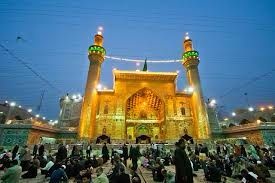
The Ottomans were expelled in an uprising in 1915, following which the city fell under the rule of the British Empire. The sheikhs of Najaf rebelled in 1918, killing the British governor of the city by Sayed Mahdi Al-Awadi and cutting off grain supplies to the Anaza, a tribe allied with the British. In retaliation the British besieged the city and cut off its water supply. The rebellion was put down and the rule of the sheikhs was forcibly ended. A great number of the Shia ulema were expelled into Persia/Iran where they set the foundations for the rise of the city of Qom as the center of the Shia learning and authority in lieu of Najaf. Najaf lost its religious primacy to Qom and was not to regain it until the 21st century and the establishment of a Shia-majority government in Iraq after 2003.
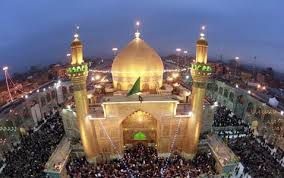
During the 2003 invasion of Iraq, Najaf was a key target of the invading United States forces. The city was encircled during heavy fighting on March 26, 2003 and was captured on April 3, 2003.
The clerical authorities of the Shīa enclave of Sadr City in Baghdad, which claimed autonomy in April 2003 after the fall of Baghdad, claimed to be taking their orders from senior clerics in Najaf.
On April 4, 2004, the Mahdi Army attacked the Spanish-Salvadoran-ALARNG base (Camp Golf, later renamed Camp Baker) in An Najaf, part of a coordinated uprising across central and southern Iraq in an apparent attempt to seize control of the country ahead of the June 30, 2004 handover of power to a new Iraqi government. This uprising led to the American troops arriving in the city in the wake of the Spanish withdrawal. In August 2004, heavy fighting broke out again between US forces and Al-Sadr's Mahdi Army. The battle, lasted three weeks and ended when senior Iraqi cleric Grand Ayatollah Alī Al-Sīstānī negotiated an end to the fighting.
